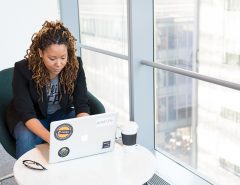When most people hear the word “conference” they think of a large collection of niche academics who meet in order to discuss “The Model Theory on Geometry and Arithmetic” or “The Materials Chemistry of Thin Film Oxides”. Instead, my experience at CUSP Design Conference earlier last month was lively, quirky, and at times downright odd.
The creators of CUSP like to call their conference “the design of everything”. As one might imagine, the design of everything might be too broad of a subject to dive into, because everything includes, well everything: car designers, swing dancers, lego sculptors, and sword swallowers (the last of which was pretty grisly to watch). Nevertheless, as a first time conference goer I took in each presenter with an open mind.
The two day event kicked off with a speech from CEO of Yuma Food Bank, Mike Ivers. Mr. Ivers spoke of his experiences in Yuma and paralleled farming and growing food with taking in information at CUSP. Unlike his suit and tie headshot on the CUSP website, he came onstage wearing overalls stuffed with vegetables that he threw into the audience. You didn’t misread that.
Indeed, throwing vegetables into the audience set the tone for the rest of the conference. Among the speakers were Youtube celebrity Dave Carroll, Lego artist Nathan Sawaya, and swing dancer Jenna Stworzyjanek. Much of the conference walked a fine line between entertainment and design, occasionally raising a few eyebrows at the relevancy of the subject matter.
Ironically, the speakers that left the strongest impression were not necessarily the ones that called themselves designers or even artists. Pediatrician and mother Dr. Joyce Lee was one of the most compelling speakers, despite the fact that she spent more time in a hospital than she did a studio. Dr. Lee became frustrated with poorly designed medical devices after she realized how difficult it was to explain her sons food allergies and his epi-pen to teachers and caregivers. Her conversation challenged audiences to question the status quo in design, and that if something is difficult to use, the flaw may not be in the user but in the design of that item.

The most profound idea I took away from CUSP not only revolved around design, but a philosophy of how any artist should approach their work. Space architect Constance Adams spent 15 years designing high performance structures for NASA and Synthesis International, and much of her discussion focused on her thought process behind design structure beyond most of the audience’s comprehension. But in the midst of her presentation she mentioned: “I believe that chaos is bullshit. If things are random to us it’s because we haven’t zoomed out enough to see the pattern.”
So I left CUSP wondering, where in my life do I need to zoom out?

Cinema Art + Science student Phillip Cheng.


